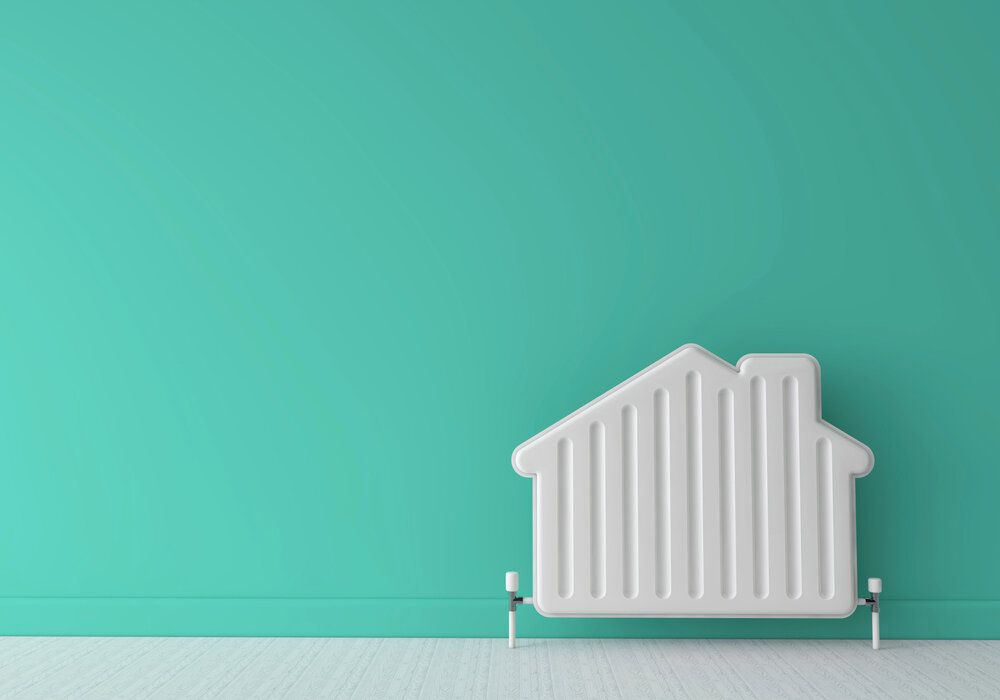Legionella risk assessments and regulations: landlord guide
Legionella risk assessment legislation is a source of mystery for many in the property industry. While there is a general awareness that legal obligations exist for landlords, few can explain what they are or how they’re met, leading in many cases to a ‘don’t ask, don’t tell’ approach to this important health and safety issue.
Where lettings agents do address the matter of a landlord’s Legionella obligations, there is a tendency to exploit the obscurity that shrouds Legionella risk assessment legislation to upsell completely unnecessary tenancy services at extortionate prices.
While Legionella sounds terrifying, and the diseases it can cause are very serious, fulfilling your health and safety obligations as a landlord with regards to managing the risk is a simple, straightforward, and relatively inexpensive process.
In the below guide, we answer some common questions about Legionella regulations and landlord risk assessments, and walk you through the process of managing risk in your rental property.
What is Legionella?
Legionella is a type of bacterium responsible for a group of illnesses known collectively as Legionellosis. The most serious condition associated with Legionella is Legionnaire’s disease - a potentially fatal form of pneumonia.
Legionella is found naturally in freshwater environments, such as lakes and streams, but it can become a health concern in all human-made hot or cold water systems. In a rent property this generally means:
- hot water tanks and heaters
- shower heads
- sink faucets
- cold water storage tanks
- large plumbing systems
Legionella organisms thrive and spread particularly well where the following risk factors are present:
- where there is a suitable growth temperature range in any part of the system (between 20-50 degrees celsius)
- where water is stored and/or recirculated
- where water droplets are dispersed in aerosol form (i.e shower heads)
- where rust, limescale, sludge, biofilms, or other debris accumulates and ‘feeds’ the bacteria
Shower heads are particularly high-risk areas, as Legionnaire’s disease (and other illnesses caused by the bacteria) is most commonly contracted by inhaling small water droplets that have been contaminated with Legionella.
Why do landlords need to know about Legionella?
Landlords have a legal duty of care with regards to health and safety to any tenant they rent property. This includes ensuring that the risk of Legionella contamination at your rental property is appropriately mitigated.
The relevant provisions can be found under Section 3(2) of the Health and Safety at Work Act 1974 (HSWA):
"It shall be the duty of every self-employed person to conduct his undertaking in such a way as to ensure, so far as is reasonably practicable, that he and other persons (not being his employees) who may be affected thereby are not thereby exposed to risks to their health or safety."
Under later provisions of the same act, landlords are considered to be self-employed for the purposes of health and safety legislation, while tenants fall into the class of ‘other persons (not being his employees).’ Landlords therefore have a legal responsibility to ensure that they do not rent any property in such a way that tenants are exposed to health and safety hazards.
What the law says…
The Health and Safety Executive provides the following interpretation of a landlord’s duties under the HSWA:
‘The practical and proportionate application of health and safety law to landlords of domestic rental properties is that whilst there is a duty to assess the risk from exposure to Legionella to ensure the safety of their tenants, this does not require an in-depth, detailed assessment.’
They later continue:
‘Implementing simple, proportionate and appropriate control measures will ensure the risk remains low.’
Landlords are therefore obliged to undertake Legionella risk assessments when necessary and make sure that there are measures in place to control the spread of bacteria.
The surest way to ensure that the risk remains low is through temperature control and frequent water circulation. This means ensuring that hot water remains above 50 degrees celsius, cold water remains below 20 degrees celsius, and that water is regularly moving around the system. The HSE advises the following simple control measures to contain the risk of Legionella:
- removing redundant pipework (plumbers refer to these as ‘dead legs’)
- ensuring that there are tight-fitting lids on all water to tanks to prevent debris from getting into the system
- setting temperature control parameters on any boilers that store water, e.g. ensuring that the hot water cylinder on your boiler is set to store water at 60 degrees celsius
- flushing out the water system on a regular basis, particularly prior to letting the property after a long period of vacancy
With the exception of removing pipework, all of these measures can be implemented by the landlord without any need for professional assistance.
What the law doesn’t say…
Both the legislation itself and the HSE’s advised interpretation of the law is relatively sparse on detail when it comes to a landlord’s precise obligations. Many agents take advantage of this lack of clarity by inventing specific ‘legal requirements’ and conditions to upsell third-party tenancy services.
Landlords should be aware that the legislation does not:
- prescribe any timeline according to which your risk assessment needs to be completed or reviewed; i.e. there is no legal requirement to complete a risk assessment annually, biennially, every 5 years, prior to each new tenancy etc
- stipulate that risk assessments need to be completed by anyone with specific professional training or accreditation (unlike, for example, an EPC - which must be completed by an accredited domestic energy assessor)
- require landlords to produce or obtain a ‘Legionella risk assessment certificate,’ and there is no such certificate that is formally recognised by the HSE.
- keep a log recording the date of any assessment and detailing the findings.
Do not be deceived into purchasing expensive add-on services on the basis of false claims related to your legal obligations regarding compliance with health and safety regulations.
What is a Legionella risk assessment then, and who can do it?
A Legionella risk assessment is simply an assessment conducted on your rental property’s’ hot/cold water system to determine the level of risk of Legionella contamination.
Most landlords are capable of assessing the risks involved in operating a domestic hot water system and can complete a satisfactory assessment by themselves. There is no need to hire a professional assessor, though this might be the more practical option if you do not live locally to the property, lack the time or inclination to be a hands-on property manager, or prefer the peace of mind that comes with hiring an expert.
A risk assessment generally involves a visual inspection of different elements of the water system (pipework, boiler, faucets, shower head etc) and taking sample water temperatures. If the property has been vacant for some time and your domestic water system is old and/or includes a water storage tank where water sits stagnant for prolonged periods.
What do I need to do to assess and manage the risk of Legionella contamination in my rental property?
The process of assessing and managing risk is fairly straightforward and does not require any sophisticated equipment or specialist training.
To assess the risk, you should:
- locate the property’s hot water source and check the temperature of the hot water outlet pipe (this should be easy to locate if your boiler as a hot water cylinder, but if you have a combi boiler you can consult the manual to find the correct pipe) - the temperature should be 50 degrees celsius or above
- check the temperature of the water at the hot/cold water faucets that are nearest and furthest from the main source; hot water should reach >/50 degrees celsius and cold water should reach </20 degrees celsius within one minute after the tap has been turned on
- complete a visual inspection of any tanks, shower heads, and faucets to ensure that any lids are tightly secured and that there is no debris, scale, sludge or other organic matter present that might encourage bacterial growth.
To manage the risk during your assessment, you should do the following:
- flush out the hot water cylinder next to your boiler (not applicable if you have a combi boiler or instantaneous water heating) using the tap on the tank until you have collected at least one bucket of water
- remove the shower head and hose and leave to soak in a bucket of domestic disinfectant, then rinse through thoroughly to remove all cleaning product once finished
- flush all faucets by running taps for several minutes if the property has been vacant for a period of 6 months or longer.
Temperatures can be checked with a standard digital thermometer. If the pipes and water aren’t reaching the necessary temperatures, first try adjusting the settings on your boiler. If this fails to remedy the issue, then it’s time to call in a plumbing professional to take a look at the system and identify the required remedial work.
As there is no prescribed schedule for completing or reviewing tests, landlords should determine an appropriate assessment timetable based on the level of risk at their own property. Water systems that rely on combi boilers and instant heating mechanisms are lower risk than properties with conventional boilers or older plumbing.
If you cannot get the water to reach the required temperature, it is also worth taking a water sample and sending it off for a Legionella test at a UKAS accredited lab. These tests are inexpensive and reliable, and offer valuable peace of mind for both you and your tenants if any faults or risks are identified during your assessment.
Though there is no legal requirement to log your assessments or undertake these according to any specific schedule, it is best practice as a property manager to keep records of all the work to you to assess and mitigate risk. This allows you to keep up with your compliance obligations and indemnifies you against any complaints (however unlikely this may be) with regards to your health and safety practices.
It should be noted that risk of Legionella contamination in domestic water systems is considered to be low. In most residential settings, daily water usage is normally sufficient to flush out a system on a regular basis. The risk is even lower if you have a combi heater or if hot water is fed into the system from instantaneous water heaters, as there is no need for water to be stored in tanks for any prolonged period.
Protecting your tenants’ health and safety is a matter of utmost importance for all good landlords. Don’t be intimidated by Legionella regulations and take charge of the risk assessment process in your rental property.
At Home Made, we offer a hybrid lettings solution that adds value at every stage of the rental process. With our game-changing new landlord platform, The Property Wallet, we offer London landlords exceptional tenant-find and property management services for a low monthly fee.
- Avoid expensive upfront fees and spread the cost of marketing your property with the option to pay monthly.
- Free rent collection and arrears chasing.
- Sign off and see all charges and payments in your dashboard.
- Real-time updates on marketing, viewings, and offers.
Prices start from just £50+VAT/mo for tenant-find and £60+VAT/mo for management. Alternatively, you can pay a one-off upfront fee of £1,200+VAT for our tenant-find service.
If you would like to speak with us about your property needs, contact us via our website to find out how we can help. If you're ready to get started, book your free valuation here.
Book valuationCheck out more of our landlord advice here and follow us on Twitter, Linkedin, and Instagram for regular updates on industry compliance standards, market insights, and Home Made company news.




